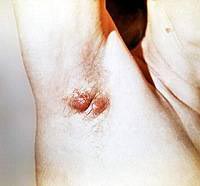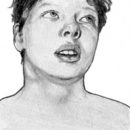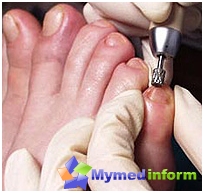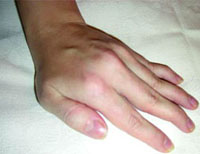Chronic recurrent hydragenite is a long-term purulent inflammatory disease. Most often the disease occurs in the axillary depressions. Treatment of chronic recurrent hydragenite is based on the use of antibiotics and immunomodulatory.
Content
The concept of chronic recurrent hydraenite
 Sweet glands - simple tubular glands, occur in almost all sections of the skin, except for the red border of the lips, the heads of the penis and the inner sheet of the extreme flesh. The total number of them about 2-2.5 million. Especially rich in feather glands, the skin of the pulp of fingers and legs, palms and soles, axillary depression and inguinal folds. The secret of sweat glands - the sweat - contains 98% water and 2% of the dense residue from organic and inorganic substances.
Sweet glands - simple tubular glands, occur in almost all sections of the skin, except for the red border of the lips, the heads of the penis and the inner sheet of the extreme flesh. The total number of them about 2-2.5 million. Especially rich in feather glands, the skin of the pulp of fingers and legs, palms and soles, axillary depression and inguinal folds. The secret of sweat glands - the sweat - contains 98% water and 2% of the dense residue from organic and inorganic substances.
From then there are protein metabolic products (urea, uric acid, ammonia, etc.), some salts (sodium chloride and others.). By the nature of secretion, sweat glands are divided into frozen (highlight sweat in the output duct without the destruction of cytoplasm of secretory cells) and apocrynetic (partial destruction of cytoplasm of secretory cells). The latter are in the skin of the axillary depression, the area of the rear pass, outdoor genital organs. The secret contains a large amount of protein substances and has a sharp smell.
Chronic recurrent hydragenite - long-term purulent inflammation of sweat glands. It usually occurs in the armpit depressions (the so-called bitch udder), much less often - in the genital area in men and women - in the field of nipples and navel. People suffering from sweating more often. Dermatitis (eczema, diapership), weakening of the body, minor skin injuries (for example, when driving hair in the armpit), non-compliance with personal hygiene rules, creating conditions for penetration of gloty microbes (staphylococci, more often gold) into sweat glands.
Chronic recurrent hydragenite
Chronic recurrent hydragenite flows for a long time, with exacerbations. In the initially, in the depths of the subcutaneous fiber, one or more dense painful, magnitude with the pea of the nodules, which quickly increase the size of the walnut. Initially, it is covered with unchanged skin, and then the surface of it becomes uneven, crimson-red.
When moltening infiltrate, fluctuation appears and a creamy pus is highlighted through a small hole. Duration of the development of infiltrate 10-15 days. Inflammation often applies to subcutaneous fatty tissue. Skin over the inflamed gland blushes. Along with strong pain sometimes there are chills, general ailment, body temperature rises.
Treatment of chronic recurrent hydragenite
With the appearance of the first symptoms of the disease, you must immediately consult a doctor. Antibiotics are prescribed as treatment - sulfonamides, nitrofurans, as well as autohemotherapy (performing intramuscular injections with its own blood).
In chronic recurrent forms of hydrabenitis, specific immunotherapy is carried out, aptive means. Locally use dry heat, UHF. A good effect gives the infiltration to the antibiotic solution in Novocaina. In the treatment of hydragenite, radiotherapy is successfully used. Further development of purulent inflammation can lead to the formation of an abscess, in this case it is necessary to immediately intervene (an abscess of abscess with a small incision), which will avoid the spread of purulent inflammation and developing serious complications - lymphadenitis, sepsis, phlegmon.
To close the wound, it is recommended to use non-bandages that rub into the skin of the pus, but stickers. Measures should be taken to prevent infection of sweat glands from the penette, which is achieved by the skin tossing with alcohol, leather treatment in the area of lesion 2% boric or 10% camphor alcohol, as well as other bubble substances. Also showing skin irradiation with ultraviolet rays.
Prevention of chronic recurrent hydraenite
Patients with hydraenitis in order to prevent exacerbation should be excluded from the edible ration of alcohol, sharp seasonings, limit sweets, it is recommended to include food rich in vitamins A, C, E and iron (carrots, cabbage, apples, berries, rosehip, etc.). Important conditions for prevention of hydraenite - compliance with the rules of personal hygiene and the treatment of sweating.









